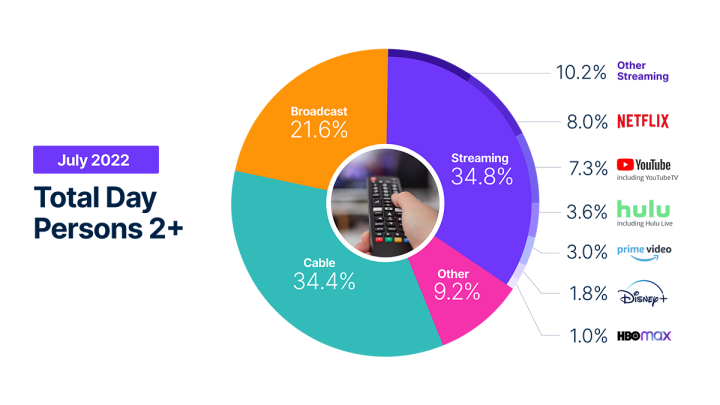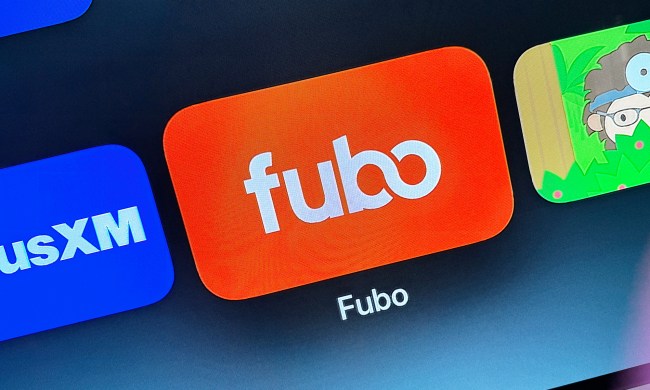More people “streamed” television in July 2022 than watched on traditional cable TV, according to Nielsen. That’s a big deal. Because it means streaming no longer is the future — it’s the present.
And I suppose that matters. The question is to whom. Not so much me.
I got rid of cable TV years ago. Even made a video about it. It wasn’t particularly hard. It wasn’t particularly brave. It was, however, a good bit less expensive. (Note to self: See if your subscriptions to seven streaming services are still worth it.)
But here’s the thing: The whole “streaming wars” phrase is a misnomer. It’s a made-up phenomenon meant for headlines and chyrons and has led to some seriously bad online posts meant for Google, not normal people. Pitting Netflix against Disney+, or Hulu against Apple TV+ — or any other combination you can come up with — is just silly. Other than for financial reasons (which are very real), there’s absolutely no reason you can’t subscribe to multiple streaming services. You can make a choice, or not.
Then there’s the fact that there’s streaming, and then there’s streaming. It’s a bit of a false equivalency to say that YouTube TV is on the same playing field as Disney+. It’s not. They are discrete services doing very different things. And on-demand services like Paramount+, Hulu, Disney+ and Amazon Prime Video (never mind the fact that some of them indeed do have live content, like sports) are doing very different things than what you get from Cox or Comcast or Spectrum or whichever you have where you live. (Also never mind that some of the on-demand services are finding themselves available with traditional cable bundles.)

The Nielsen numbers play out thusly: Streaming hit 34.8%; Cable hit 34.4%; and Broadcast TV hit 21.6%. Netflix led the way for streaming with 8%, followed by YouTube and YouTube TV (disregard that those are two very different things, too) at 7.3%. The percentages dropped off precipitously from there, with Hulu and Hulu With Live TV (again, two very different things) at 3.6%. (“Other” streaming services made up the highest percentage, at 10.2%. That is “any high-bandwidth video streaming on television that is not individually broken out.” So, OK.)
This is why I don’t really care: Consider cable TV versus something like YouTube TV, which to date is the most popular live TV streaming service with more than 5 million subscribers. Both of those methods involve video being encoded and compressed, then beamed into my home (for a lot of folks that’s over the same coaxial line), and then decoded by some sort of magical decoder box. I have very little control from there, so I’m at the mercy of the compression algorithms either way. (Middle-out FTW.)
The “Streaming Wars” is about advertising, not who actually “wins.”
Those two things sound pretty similar, eh? So long as I’m able to watch what I want — be it live TV or something on-demand — and it’s done in a way that looks and sounds good enough, what do I care whether it’s via cable or streaming? Magic bits are magic bits.
If anyone’s at war here, it’s the MVPDs (which I usually refer to as a “live TV streaming service” because I prefer writing in English) like YouTube TV, Hulu With Live TV, Fubo TV, Sling TV, and DirecTV Now. Those are the ones that directly compete with overlapping groups of linear channels. Those channels and the prices at which they’re fed to you make a difference. It’s ammo and armament in a war.
But the whole cable-versus-streaming thing isn’t about you and me. It’s about advertisers. It’s about companies trying to figure out where to best put their marketing dollars. And that discussion actually is about to get a whole lot more interesting now that HBO Max has an option that includes advertising, and Netflix also has one on the way.
That’s not to say that Netflix and Amazon and Disney aren’t all concerned with how many subscribers they have. Of course they are, otherwise, they wouldn’t bother crowing about how many they have. It’s just not quite a war in the traditional sense.



